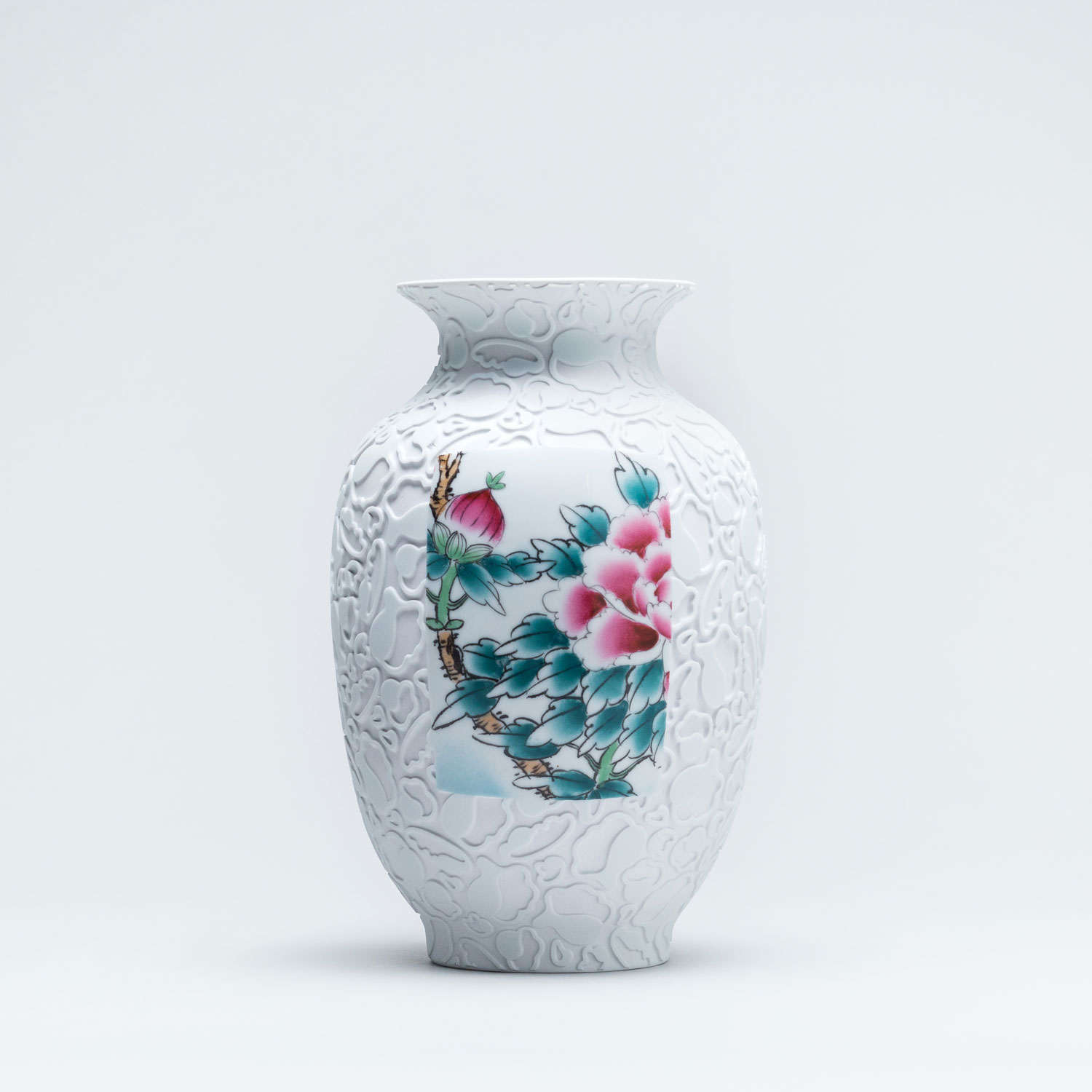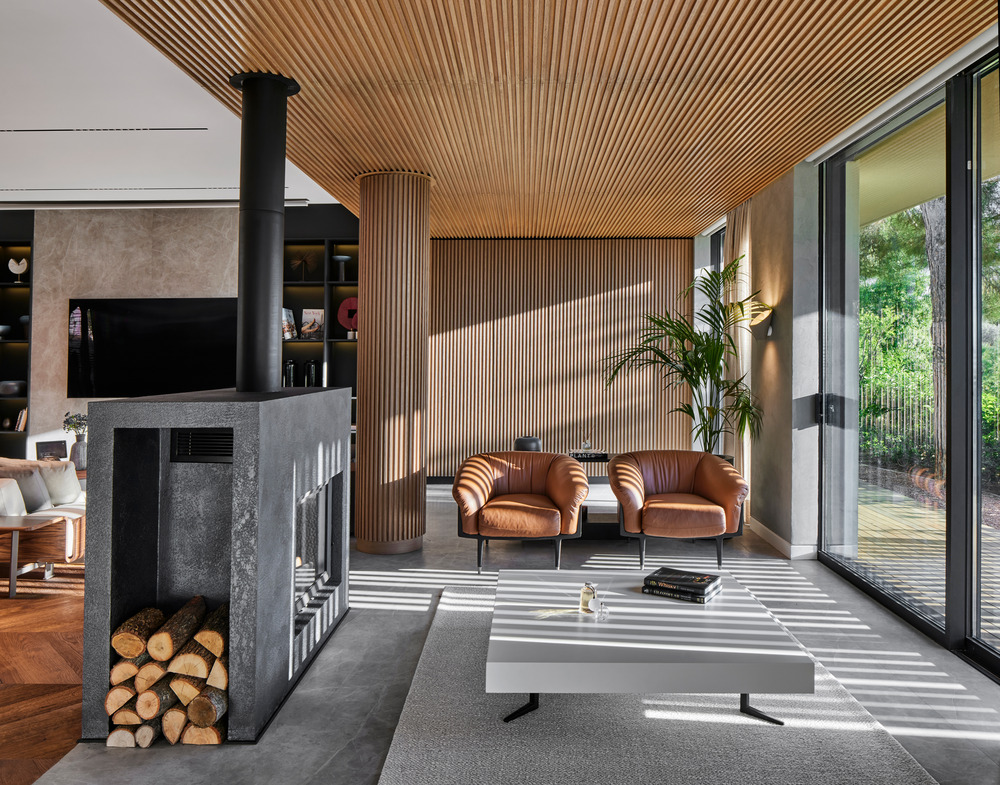In an interview with Asia Designers Directory, Hans Tan, an award-winning designer, curator and educator shared about his technique in his latest collection BEFORE AFTER, and his takeaway in his teaching profession at National University Singapore.
You always tell stories with your collection. Can you share with us the story of BEFORE AFTER that was recently exhibited at the EMERGE@FIND Singapore Design Week 2022? How is it different from the previous collections?
 Hans Tan |
I have been using a resist blasting technique on porcelain vessels, where the original glaze segment is purposefully erased to reveal the pure, white porcelain bisque beneath and to apply a pattern during the process—at times I would replace an existing pattern by creating a new one in its place. BEFORE AFTER is the latest series of collections made with this resist blasting technique. Original porcelain vessels are sourced from old shops and thrift stores at a very low price; in fact, most of the similar shops are closing down. Since I first embarked on this technique, the concept of removing the beautiful original glaze from the porcelain without the use of a new design has been a staple in my sketchbook. However, I did not have the courage to reveal the bare, resist-blasted porcelain’s compelling and subdued texture on its own without a narrative. |
With BEFORE AFTER, I pursued a “half and half treatment”. On one hand, the ornamental glaze was seen in full splendour; on the other, it was utterly bare. The most fascinating angle is possibly the in-between view, where the surface contrasts the before and after of the treatment and a new lease of life is given to these forgotten pieces.
- Before After No.2 (Photo Credit: studiowongs)
- Before After No.2 (Photo Credit: studiowongs)
- Before After No.2 (Photo Credit: studiowongs)
How would you describe your work and what inspires your creations? What keeps you going in the course of your work?
Often, I begin with the material before moving on to the process. I adore manipulating materials and inventing new ways to create new products. I’ll then focus on the storytelling portion, which for me is always interesting and thought-provoking.
I was inspired in my earlier days whilst still pursuing my postgraduate studies in the Netherlands, where I observed a predominant culture of designers and artists creating designs of their own—I knew that one day I would return to Singapore and do the same.
Unlike the Netherlands, Singapore does not have a vibrant designer-maker industry. As a designer-maker, I started to design and produce work exclusively for my studio to highlight the idea of maker and craft—not necessarily to exhibit fine craftsmanship, but to showcase inventiveness and uniqueness.
- Outside In No.1 (Photo Credit: studiowongs)
- Outside In No.2 (Photo Credit: studiowongs)
- Outside In No.3 (Photo Credit: studiowongs)
- Pour Table Collections (Photo Credit: studiowongs)
- Pour Table Collections (Photo Credit: studiowongs)
Compared to five years ago, I’m happy to see that there are more designer-makers in Singapore now. I also have a studio where I teach. As a teacher, I feel that it is my responsibility to set an example, explore fresh possibilities, and use my skills as a designer to put concepts into action.
In 2018, you received the Designer of the Year at the President’s Design Award in recognition of your work. What impact does this award have on your career or designs? What is the biggest takeaway from your educational career in design?
It is always a privilege to receive any form of recognition, more so from the President’s Design Award. Winning this award has opened up doors to more opportunities to exhibit and show my work. Singaporeans tend to have a propensity of becoming well-known outside of the country before becoming so at home. However, I’ve always desired the opposite. In order to create a solid base within the nation that will appeal to a worldwide audience, I would work with local craftspeople, engage with the local communities, and make use of local resources.
In the Netherlands, there is little or no distinction between an artist and a designer. But when I returned to Singapore, there has been a misnomer of calling me an artist. However, as a trained industrial designer, I am more inclined towards being labelled a designer.
After graduating from the Masters programme in the Netherlands, I returned to Singapore and began teaching as well. Teaching has been incredibly interesting and rewarding for me. As a designer, I would work on one collection at a time, but as a teacher, I would find myself overseeing 20 different students’ projects simultaneously. Although my role is to guide my students rather than take the lead on their design projects, I feel the need to be one step ahead of my students.
I also feel that there are similarities between teaching and design. When we teach, we can be perceived to be designing someone’s mind, to help shape thoughts through concepts and techniques imparted. This relates to design in some way, where I put together pieces that emphasise communication—not just functionality and practicality.











